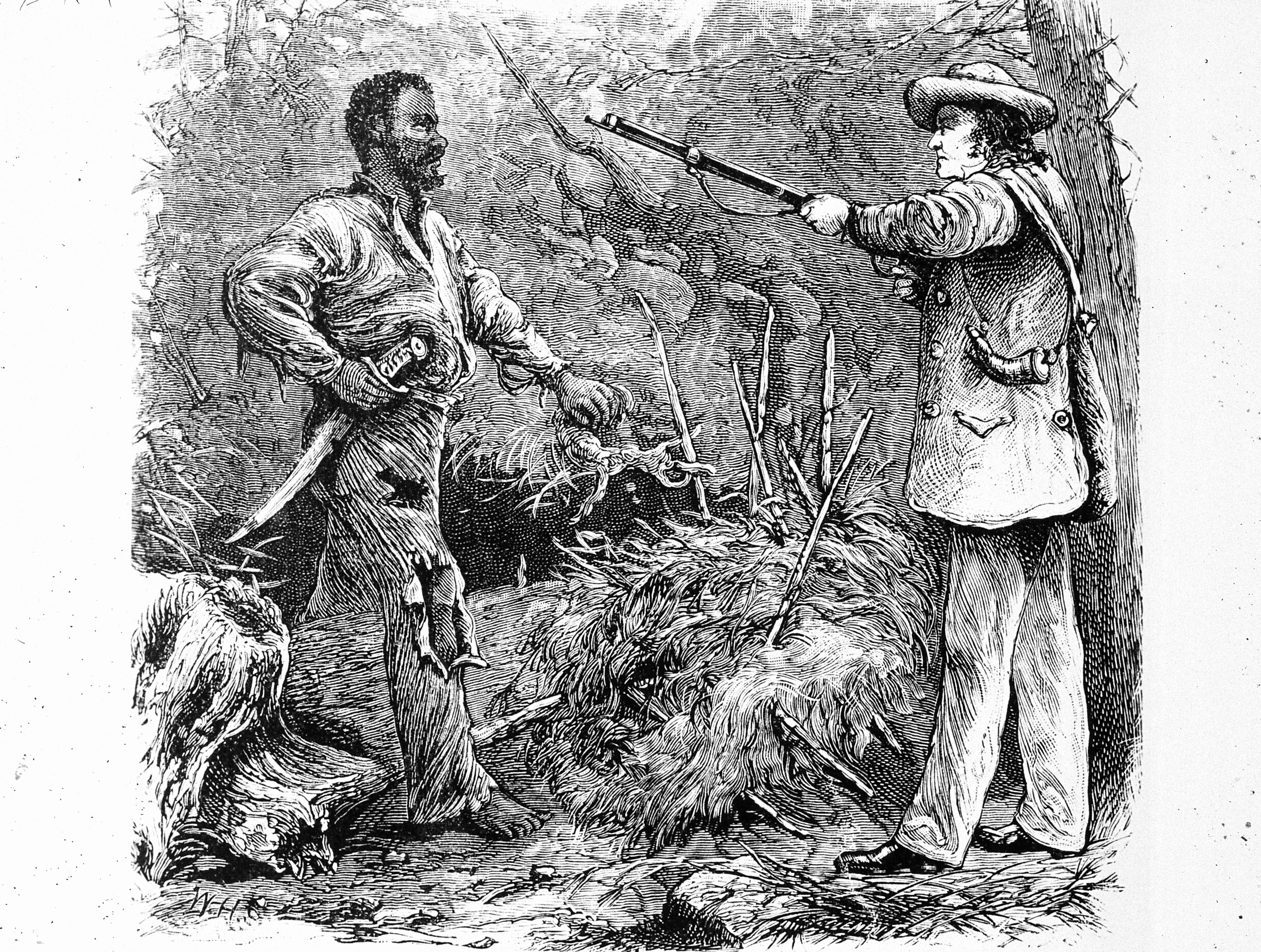
Source: MPI / Getty
UPDATED: 5:43 p.m. ET, Oct. 2, 2024
Nathaniel “Nat” Turner’s story is an American tale of defiance and tragedy. Born into slavery on October 2, 1800, in Southhampton County, Virginia, Turner was a very religious man, partly because he was allowed to read and spent much of his time reading the bible.
In 1831, Nat Turner led a rebellion of slaves known as the “Southampton Insurrection” against their White owners, which led to the death of more than 160 people in total. The rally would be the largest uprising, at that point, in United States history.
SEE ALSO: House Slaves Betrayed Denmark Vesey By Unveiling Revolt Plot 190 Years Ago Today
Nat Turner spent his life in the Southampton region of Virginia, a predominately Black area. He had strong ties to the Coromantee people, as his maternal grandmother was a part of that group. The Coromantee were known for slave revolts, which may have inspired his later calling. Unlike many slaves, he learned to read and write at a young age, finding comfort in religion. Quoting Bible verses and plagued by what he thought to be prophetic visions, Turner would lead his fellow slaves in church services, with his congregation calling him a “prophet.”
In 1828, Nat Turner said that while working in the field, he heard “loud noise in the heavens,” which he said was God telling him to strike back against the slave owners who held him and his fellow slaves captive. He began planning a rebellion in early 1831 and said that a series of solar eclipses were signs from above that he should strike back. Originally planning the uprising for July 4, Turner would have to postpone the revolt due to planning and illness. On August 13, another solar eclipse took place, and a week later, Nat Turner would launch the rebellion.
With a trusted handful of slaves, Nat Turner and his crew would go from house to house, freeing slaves and killing any white people in their midst. More than 70 enslaved and freed Blacks made up the rebel force.
Before a white-armed militia could contain the rebels, they would kill 60 white men, women, and children while more than 100 Black people were also killed.
Turner’s rebellion inspired cruelty from slave owners who wanted revenge for the uprising. In retaliation, more than 200 Blacks — many who knew nothing of Nat Turner — were beaten, tortured, and killed.
Even though Nat Turner’s rebellion was quelled in two days, he was able to avoid capture until October of that year. He was tried on November 5th for “conspiring to rebel and making insurrection” and thus was made an example of in a public execution. Turner said that he hoped to inspire other slaves to seek freedom by any means and later, he wanted to spread “terror and alarm” among White people.
Although he remains a controversial figure, Nat Turner’s legacy remains that of a man who felt that the injustices he and his people faced were ungodly and that a divine source led him to free other captives by whatever means available.
SEE ALSO:
The History Of Black People With Blonde Hair
Ireland’s Earliest Inhabitants Were Black People With Blue Eyes

8 photos
